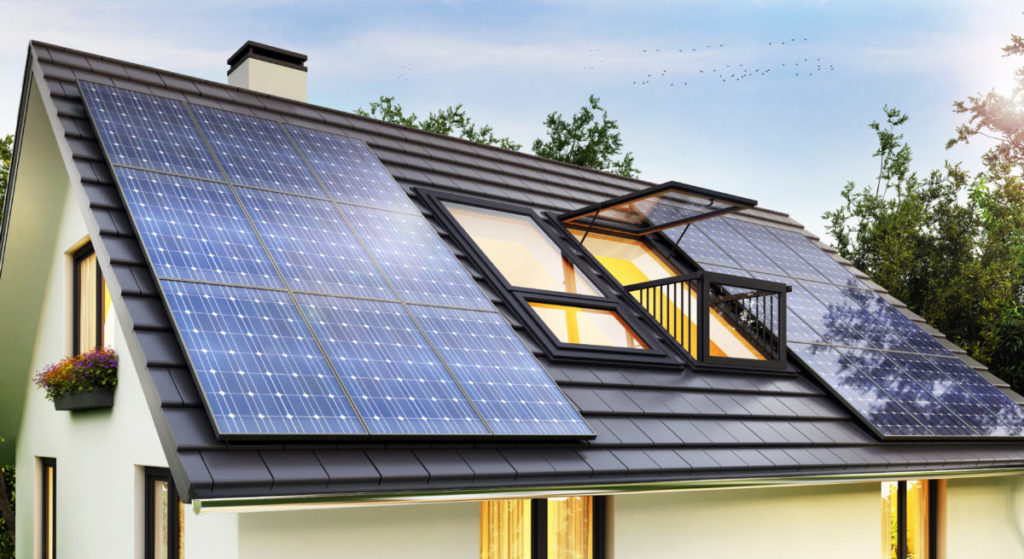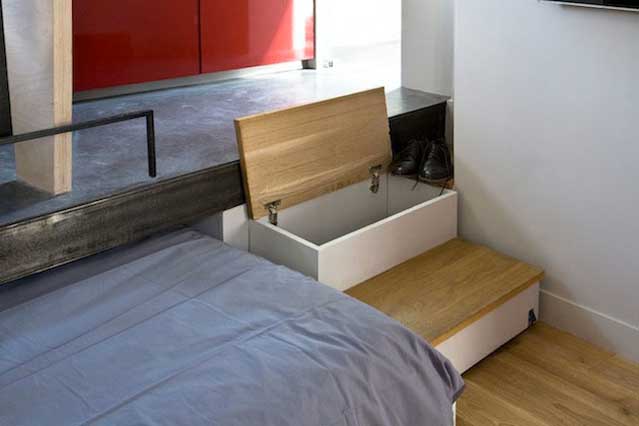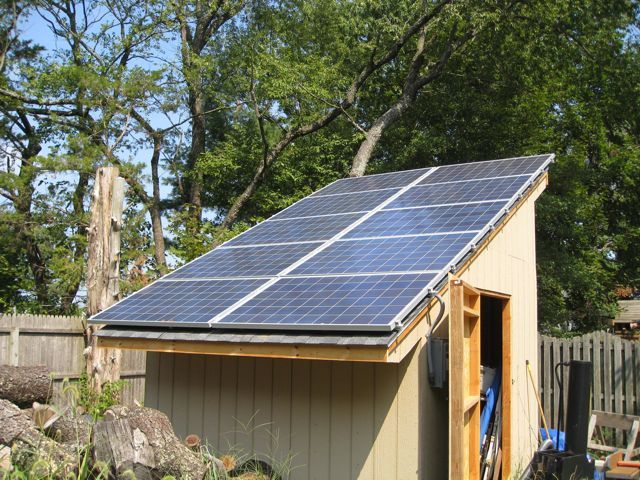As energy costs continue to rise, homeowners and building managers are looking for affordable solutions to heat their spaces without breaking the bank.
One effective option is passive solar heating, which leverages natural sunlight to warm up interiors without using expensive equipment or fossil fuels.
We’ll explore how to implement low-cost passive solar heating in your home or building, and discover the benefits of harnessing the power of the sun for a warmer, cozier space.
Orient your home to the south
This is the most important factor in passive solar heating. By orienting your home towards the south, you can take advantage of the natural sunlight that enters through the windows.
By doing so, you can maximize the natural sunlight that enters through your windows, particularly during the winter months.
The sun’s rays will penetrate through the glass and warm up the interior spaces, providing a cozy and comfortable living environment.
This orientation also allows for optimal absorption of solar energy by the building materials, such as walls and floors, which can store the heat and release it over time.
This passive solar design strategy can significantly reduce your reliance on artificial heating systems, thereby lowering your energy bills and carbon footprint.
In fact, studies have shown that well-designed passive solar homes can save homeowners up to 75% on their heating costs compared to traditional homes.
So, if you’re looking to harness the power of the sun for a more sustainable and cost-effective heating solution, orienting your home towards the south is the first step towards achieving this goal.
Use thermal mass materials
Thermal mass materials, such as concrete, brick, or stone, absorb and store heat from the sun during the day, and release it at night. This can help to warm up your home during the colder months.
By incorporating thermal mass materials, such as concrete, brick, or stone, into your home’s design, you can harness the natural energy of the sun to regulate your indoor temperature.
During the day, these materials absorb and store heat from the sun, effectively raising the temperature inside your home.
As the sun sets and the outdoor temperature cools, the thermal mass materials release the stored heat, gradually warming up your home during the colder months.
This process, known as thermal mass storage, can help reduce your reliance on heating systems and maintain a more consistent and comfortable indoor temperature.
Use double-glazed windows
Double-glazed windows can help to reduce heat loss during the winter, and keep your home warmer. They can also reduce noise pollution and provide better insulation.
Double-glazed windows can play a important role in reducing heat loss during the winter and keeping your home warmer.
These windows feature two panes of glass separated by a gap, which creates an insulating barrier that prevents heat from escaping.
As a result, you can enjoy a more comfortable and consistent indoor temperature, even on cold winter days.
Double-glazed windows can also reduce noise pollution, which is particularly beneficial if you live near a busy street or noisy neighbors.
The added layer of insulation also provides better soundproofing, ensuring that your home remains a peaceful retreat.
Furthermore, double-glazed windows are designed to be energy-efficient, which means they can help you save money on your energy bills.
By installing these windows, you can enjoy a cozier, quieter, and more energy-efficient living space all year round.
Add insulation
Proper insulation is essential for any passive solar heating system. Make sure your home is well-insulated, especially in the attic and walls. This will help to retain the heat during the winter months.
Proper insulation is a critical component of any passive solar heating system.
It ensures that the warmth generated by the sun during the winter months is retained within the home, reducing the need for supplemental heating.
To maximize the benefits of passive solar heating, it is essential to ensure that your home is well-insulated, particularly in the attic and walls.
This can be achieved through the use of high-quality insulation materials, such as fiberglass, cellulose, or spray foam.
These materials should be installed in such a way as to minimize air leaks and gaps, which can let heat escape.
It is important to seal any openings or penetrations in the attic or walls, such as vents or electrical outlets, to prevent warm air from escaping.
By taking these measures, you can ensure that your home remains cozy and comfortable throughout the winter, while also reducing your energy bills.
Install a tankless water heater
Tankless water heaters use less energy than traditional water heaters, and can help to reduce your energy bills. They heat water only when needed, so you can save money on your energy bills.
Tankless water heaters are a smart choice for homeowners looking to reduce their energy bills.
Unlike traditional tank-style heaters, tankless models heat water only when needed, so you can save money on your energy bills.
These units use less energy because they don’t maintain a constant supply of hot water, which can be a major energy drain.
In fact, tankless water heaters can be up to 34% more efficient than traditional heaters, which means you can save hundreds of dollars on your energy bills over the course of a year.
Plus, since tankless heaters heat water only when needed, you can eliminate the standby heat loss that occurs with traditional heaters, which can further reduce your energy costs.
Tankless heaters are more compact and can be easily installed in smaller spaces, making them a great choice for homes with limited space.
By investing in a tankless water heater, you can enjoy significant energy savings, reduce your carbon footprint, and enjoy a reliable supply of hot water for all your household needs.
Use shading devices
Shading devices, such as awnings or overhangs, can help to block direct sunlight during the summer months, reducing the need for air conditioning.
Shading devices, such as awnings or overhangs, can be an effective and simple solution to reduce the need for air conditioning during the summer months.
By blocking direct sunlight, these devices can help to keep interior spaces cooler and more comfortable, thereby reducing the load on air conditioning systems.
Awnings and overhangs can be made from a variety of materials, such as canvas, metal, or fabric, and can be customized to fit the specific needs of a building.
Shading devices can be adjusted to vary the amount of shading provided, allowing for precise control over the amount of sunlight that enters a space.
By installing shading devices, building owners and managers can not only reduce their energy consumption but also prolong the lifespan of their air conditioning equipment and reduce the strain on their electrical systems.
Overall, shading devices offer an attractive and cost-effective solution for buildings looking to reduce their energy usage and improve their indoor climate.
Utilize natural ventilation
Open windows and doors during the summer months to allow natural ventilation to cool your home. This can help to reduce the need for air conditioning.
Opening windows and doors during the summer months can be an effective way to naturally ventilate your home and reduce the need for air conditioning.
By allowing warm air to escape and cool air to enter, you can create a cooling effect throughout your home.
This is especially true in the hottest parts of the day, when the sun’s rays are strongest and the air is warmest.
By opening windows and doors during these times, you can allow the warm air to escape and be replaced with cooler air from outside.
This can help to lower the temperature inside your home and reduce the need for air conditioning, which can not only save you money on your energy bill, but also help to reduce your carbon footprint and contribute to a more sustainable future.
Opening windows and doors can also help to improve indoor air quality by allowing fresh air to enter and stale air to escape, which can help to improve overall health and well-being.
Monitor and adjust
Monitor your home’s temperature and energy usage to see if your passive solar heating system is working effectively. Adjust the system as needed to optimize its performance and reduce your energy bills.
Monitoring your home’s temperature and energy usage is important to ensuring your passive solar heating system is working effectively.
By regularly checking your thermometer and energy meters, you can determine if your home is maintaining a comfortable temperature and if your energy bills are within your desired range.
If you notice that your home is not heating up as expected, you may need to adjust your solar heating system to optimize its performance.
This could involve adjusting the angle of your south-facing windows, adding insulation to your walls and attic, or using thermal curtains to retain heat.
By making these adjustments, you can maximize the benefits of your passive solar heating system and reduce your energy bills.
It’s important to monitor your energy usage and adjust your system as needed to ensure that you’re not using more energy than necessary to heat your home.
By being mindful of your energy usage, you can help reduce your carbon footprint and save money on your energy bills.
Want More? Dive Deeper Here!
Hey there! If you’re the type who loves going down the rabbit hole of information (like we do), you’re in the right spot. We’ve pulled together some cool reads and resources that dive a bit deeper into the stuff we chat about on our site. Whether you’re just killing time or super into the topic, these picks might just be what you’re looking for. Happy reading!






